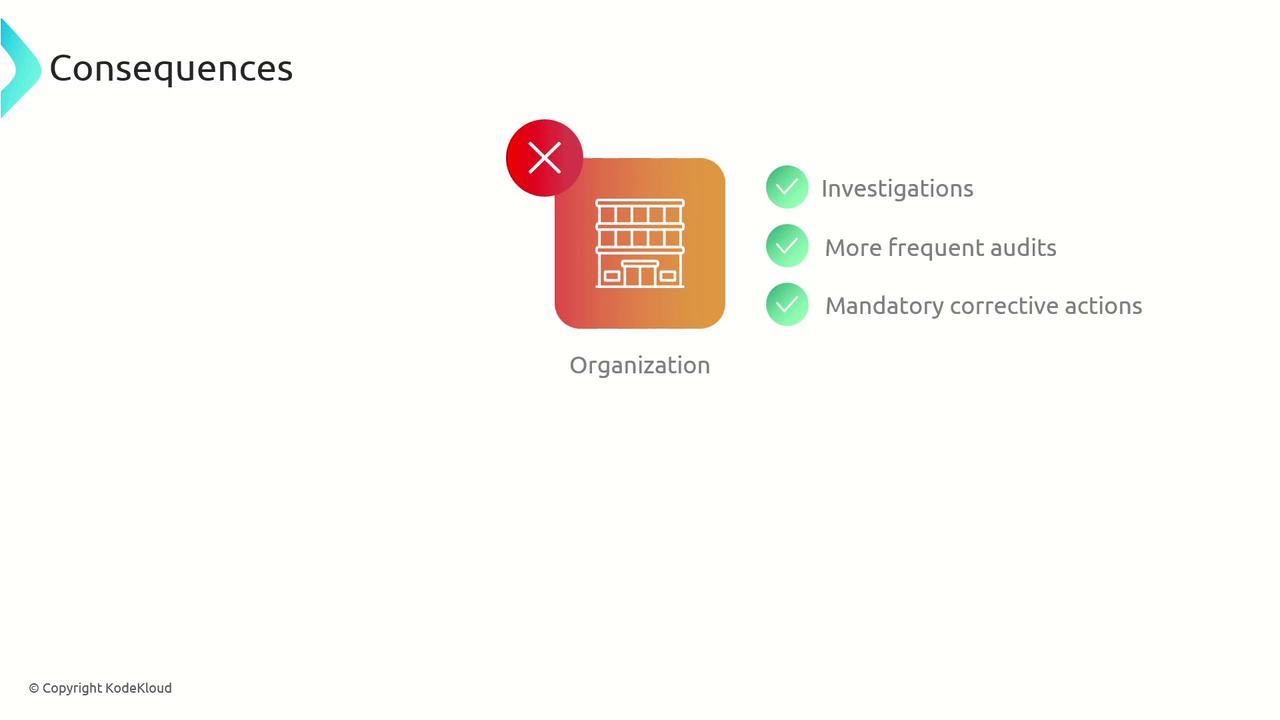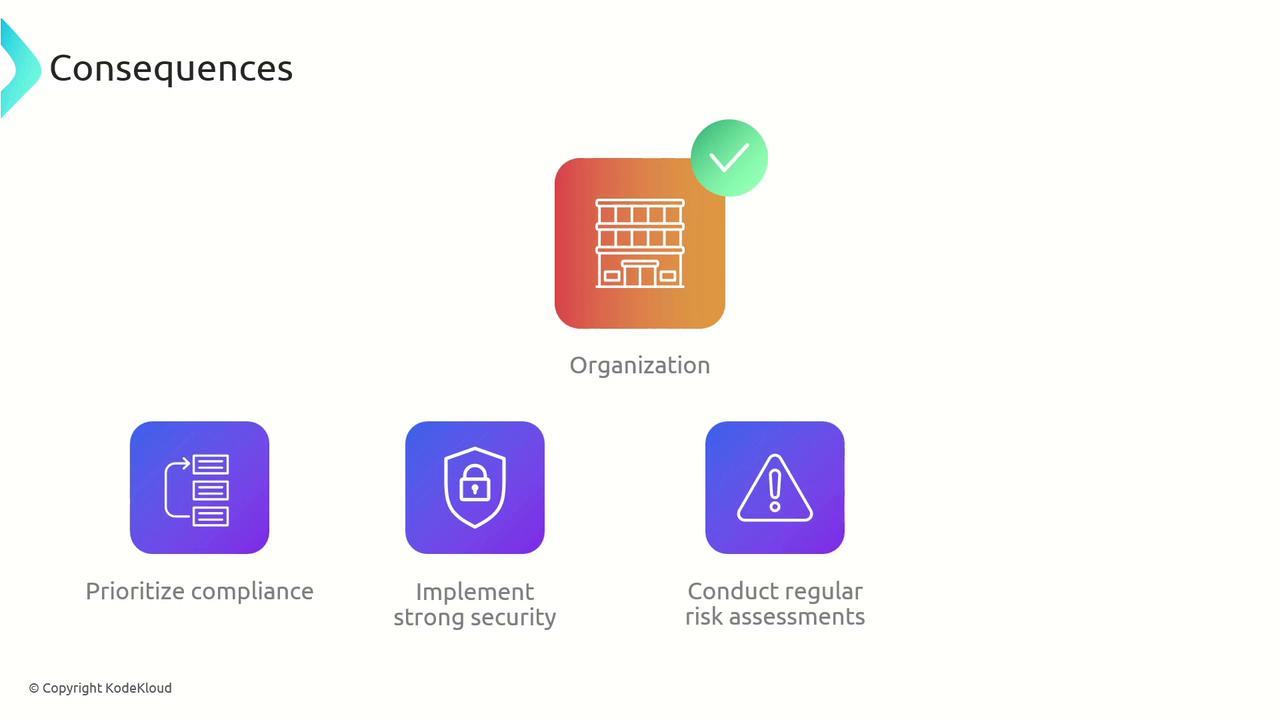CompTIA Security+ Certification
Security Management
Consequences of Non Compliance
Security compliance is essential for protecting sensitive data and ensuring that your organization meets regulatory standards. In this lesson, we explore the importance of adhering to security compliance frameworks and examine the potential repercussions of non-compliance. Compliance means following established regulations, standards, and best practices to protect the Confidentiality, Integrity, and Availability (CIA) of data.
![]()
Effective security compliance is built on the development and enforcement of robust security policies, procedures, and controls. Additionally, leveraging the right technologies allows organizations to align with regulatory mandates while meeting legal responsibilities.
Potential Consequences of Non-Compliance
Failing to comply with relevant laws and regulations can result in significant consequences, which vary by jurisdiction and regulation. The most common outcomes include:
- Legal Penalties: Significant fines may be imposed by regulatory authorities—these fines can reach millions or even billions of dollars.
- Liability: Courts might hold organizations legally responsible, leading to costly lawsuits and settlements.
- Reputation Damage: Loss of customer trust and a declining reputation can result in reduced business opportunities.
- Increased Scrutiny: Regulatory bodies may subject non-compliant organizations to more frequent investigations, audits, and mandatory corrective actions.

Additional legal actions may be initiated by other organizations, individuals, or data subjects. A tarnished reputation not only hampers current business opportunities but may also affect future earnings and growth.

Mitigating Risks Through Proactive Compliance
Prioritizing security compliance mitigates the risks associated with non-adherence. Organizations can protect themselves by taking the following proactive steps:
- Prioritize compliance initiatives in line with the applicable regulatory framework.
- Implement robust security measures to safeguard critical data.
- Conduct regular risk assessments to identify and address vulnerabilities.
- Stay updated on evolving legal requirements and industry best practices.
Key Takeaway
Adopting proactive compliance measures not only helps in avoiding legal and financial penalties but also strengthens your organization’s overall security posture.

Implementing these strategies ensures that your organization not only meets its legal obligations but also fortifies its defenses against security threats, fostering long-term success and reliable data protection.
Watch Video
Watch video content